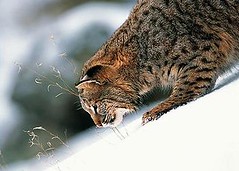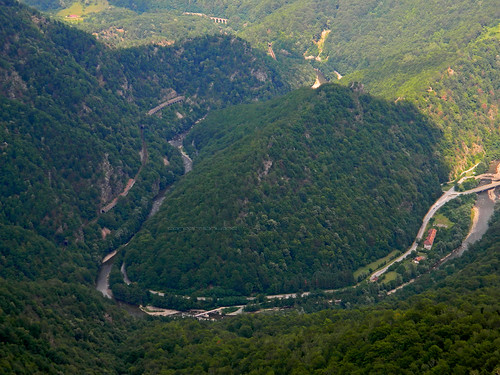歷經兩年的討論與制定,羅馬尼亞政府公布的最新版交通運輸總體規劃(2015年-2030年)中,特別納入保護動物計畫。
根據新規劃,未來羅馬尼亞的各項交通運輸計畫必須避免行經保護區;此外,發現有瀕危動物棲息的非正式保護區,也必須避開。
棲地破碎頭號殺手:交通運輸建設
新總體規劃載明了包括動物通道、生態廊道、隧道、隔音板和網子的基礎建設。
儘管如此,高速道路和橋樑仍對歐洲的動物多樣性造成風險,一旦物種消失,將產生無可避免的社會和經濟損失。
歐盟和羅馬尼亞將基礎建設列為重要發展事項,而在下階段預算中,交通運輸佔了很大一部分。然而,世界自然基金會(WWF)指出,交通運輸設施讓棲地破碎是影響物種存續的主要威脅,歐盟也開始關注這個問題。
根據WWF的建議,必須避開的區域還包括歐盟的「自然2000」(Natura 2000)保護區網絡,這也是歐盟自然和生物多樣性的政策核心。WWF中東歐區域發言人Konstantin Ivanov說,「跟歐洲其他地區比起來,羅馬尼亞仍有豐富的天然棲地,有許多歐陸大型肉食動物和稀有動物居住,包括鱘魚。」
Ivanov指出,只有「將保存物種完整遷徙路徑視為土地利用的義務」,才能有效保護棲地。
遊說成功 羅馬尼亞大修交通總體規劃
 WWF成功遊說羅馬尼亞政府修改2012年所發表的2030年交通運輸總體規劃,當時的版本沒有任何保護生物多樣性的考量。
WWF成功遊說羅馬尼亞政府修改2012年所發表的2030年交通運輸總體規劃,當時的版本沒有任何保護生物多樣性的考量。
為了讓政府意識到,不經深思熟慮的基礎建設可能對物種造成負面影響,WWF訂出一系列的要求並付諸公評辯論。
2015年1月,最新版本的總體規劃已經採納了WWF大部分的建議。接下來,交通運輸工程的規劃都必須考量蒐集生物多樣性科學數據所花的時間和成本,以保護物種。
2030年交通運輸總體規劃也首次考量氣候變遷的適應,納入避免砍伐森林和維護溼地的措施。
The government of Romania has included environmental protections drafted by the global conservation group WWF, or World Wildlife Fund, in the most recent Romanian Transportation Master Plan.
The result of a drafting process that lasted two years, this latest version of the plan, announced February 18, envisions transportation in Romania through 2030.
Under the new plan, future projects will consider routes that avoid negative impact on all types of protected areas in Romania, including Natura 2000 sites. Natura 2000, an EU-wide network of nature protection areas, is the centerpiece of the European Union’s nature and biodiversity policy.
The consideration will also extend to areas that are not formally protected, if they are inhabited by endangered species.
Infrastructure development is a priority for both the European Union and Romania and transport takes up much of the budget for the next programing period.
The new plan indicates infrastructure that includes animal passageways, corridors, tunnels, noise insulating panels and nets.
But even so, with high speed roadways and bridges come high risks to the biodiverse animals of Europe and the inevitable social and economic costs if species are lost.
Habitat fragmentation from transport is a major threat to species and solving this problem has become an EU concern, observes WWF in a statement.
Konstantin Ivanov, regional spokesman for WWF-Central and Eastern Europe, said, “Compared to the rest of Europe, Romania still has rich natural habitats inhabited by many of the continent’s large carnivores and rare species, like sturgeons.”
Ivanov says these habitats can only be maintained if “land use plans include an obligation to preserve the connectivity between their migration corridors.”
The group successfully lobbied Romanian authorities to change the first version of the 2030 Transportation Master Plan published in 2012, which made no reference to biodiversity conservation.
To build government awareness of the potential consequences of careless infrastructure development, WWF developed a set of requirements and submitted them for debate.
In January 2015, most WWF proposals were included in the 2015 version of the plan.
The planning of transport projects will now take into account the time necessary to collect biodiversity scientific data in order to protect species best, as well as the cost of this process.
Adapting to climate change is also considered in the 2030 Transportation Master Plan for the first time. Among the measures suggested are avoiding deforestation and maintaining wetlands.
※ 全文及圖片詳見:ENS






